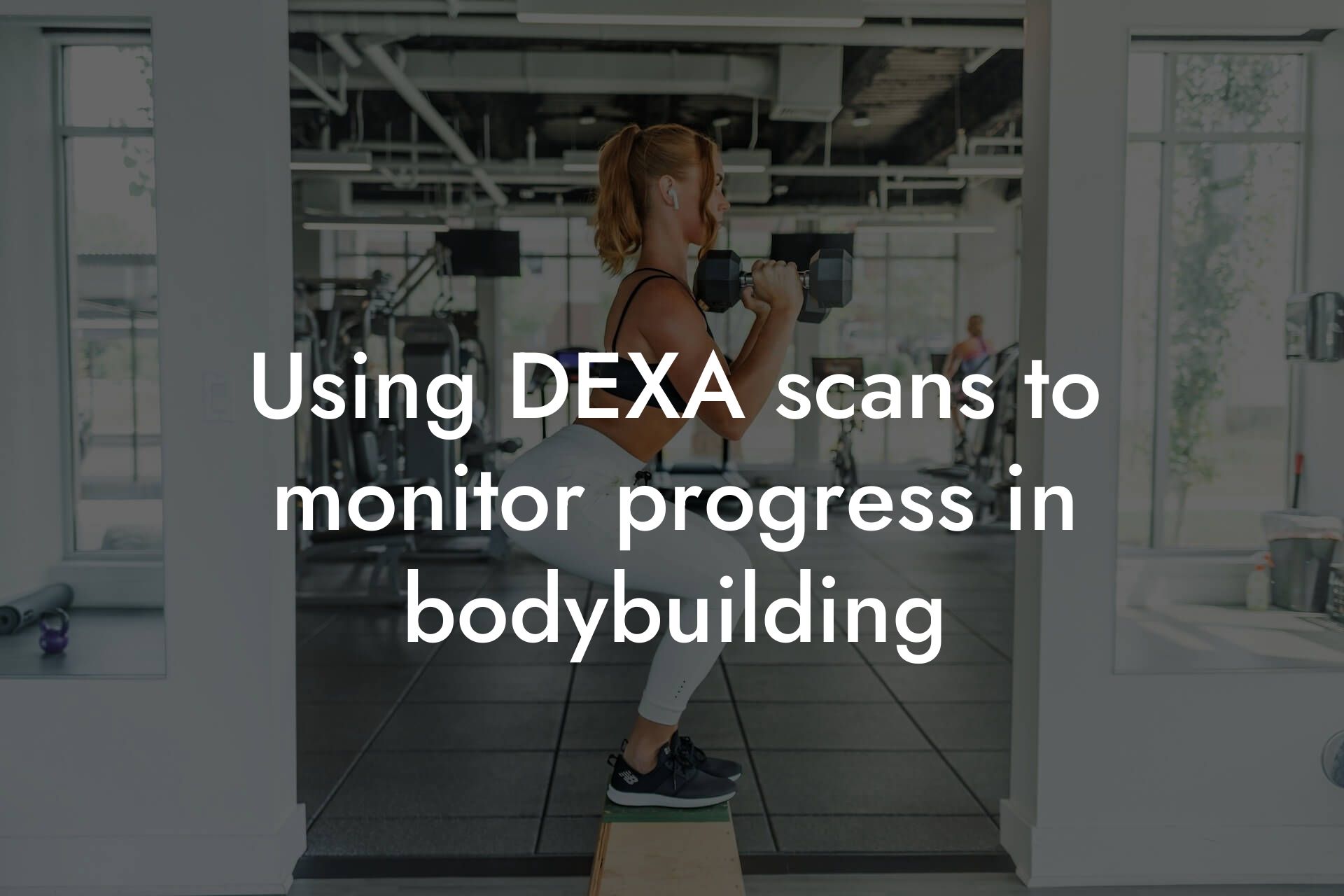As an amateur bodybuilder, you understand the importance of a well-structured workout routine to achieve your fitness goals. However, what many enthusiasts often overlook is the significance of recovery strategies in the overall process. Recovery is a critical component of muscle growth, repair, and overall physical performance. In this article, we will delve into the world of recovery strategies, providing you with a comprehensive guide to help you optimize your body's repair mechanisms and take your physique to the next level.
Table of Contents
The Importance of Recovery in Bodybuilding
When you engage in intense physical activity, such as weightlifting, your muscles undergo micro-tears. This damage triggers an inflammatory response, which leads to muscle soreness and fatigue. Recovery strategies aim to mitigate this damage, promoting muscle repair, growth, and adaptation. Adequate recovery enables your body to:
• Rebuild and strengthen muscle tissue
• Enhance muscle function and performance
• Reduce muscle soreness and fatigue
• Improve overall physical resilience
Types of Recovery Strategies
There are several types of recovery strategies that amateur bodybuilders can incorporate into their routine. These include:
• Active recovery: Engaging in low-intensity activities, such as yoga, cycling, or swimming, to promote blood flow and gentle muscle activation.
• Passive recovery: Avoiding intense physical activity and focusing on rest and relaxation to allow your body to recover.
• Contrast showers: Alternating between hot and cold water temperatures to reduce inflammation and promote muscle relaxation.
• Foam rolling and self-myofascial release: Using tools or your own body weight to release tension in the muscles and improve circulation.
• Compression garments and sleeves: Wearing clothing that provides gentle compression to improve blood flow and reduce muscle oscillation.
• Electrostimulation and EMS: Using electrical impulses to stimulate muscle contractions and promote recovery.
Nutrition and Supplementation for Recovery
A well-structured nutrition plan is essential for recovery. Focus on consuming:
• Adequate protein: 1.2-1.6 grams per kilogram of body weight to support muscle repair and growth.
• Complex carbohydrates: Brown rice, whole grains, and fruits to provide energy and support muscle function.
• Healthy fats: Nuts, seeds, and avocados to support hormone production and overall health.
In addition to a balanced diet, consider the following supplements to support recovery:
• Protein powder: A convenient way to increase protein intake, especially post-workout.
• Creatine: Helps replenish energy stores and support muscle function.
• Branched-Chain Amino Acids (BCAAs): Reduces muscle soreness and fatigue.
• Omega-3 fatty acids: Anti-inflammatory properties support overall health and recovery.
Sleep and Relaxation for Recovery
Sleep is a critical component of recovery, as it's during this time that your body repairs and rebuilds muscle tissue. Aim for:
• 7-9 hours of sleep each night
• Establishing a consistent sleep schedule
• Creating a sleep-conducive environment: Cool, dark, and quiet
In addition to sleep, prioritize relaxation techniques, such as:
• Meditation and mindfulness: Reduces stress and promotes relaxation.
• Deep breathing exercises: Helps calm the nervous system and reduce muscle tension.
• Yoga and stretching: Gentle movements to promote flexibility and relaxation.
Massage Therapy for Recovery
Massage therapy is a powerful tool for promoting recovery. It helps:
• Reduce muscle soreness and inflammation
• Improve circulation and promote lymphatic drainage
• Break down adhesions and scar tissue
• Enhance muscle relaxation and reduce muscle spasms
Consider working with a licensed massage therapist or incorporating self-massage techniques into your routine.
Ice Baths and Cryotherapy for Recovery
Ice baths and cryotherapy are popular recovery tools among athletes. They help:
• Reduce inflammation and muscle soreness
• Improve circulation and promote lymphatic drainage
• Enhance muscle relaxation and reduce muscle spasms
When using ice baths or cryotherapy, be sure to:
• Gradually acclimate yourself to the cold temperatures
• Limit exposure time to 10-15 minutes
• Avoid using ice baths or cryotherapy too frequently, as it can have negative effects on muscle growth and function
Monitoring Progress and Adjusting Your Recovery Strategy
Regularly monitoring your progress is essential to optimizing your recovery strategy. Use tools such as:
• DEXA scans: Provides detailed information on body composition, bone density, and muscle mass.
• Progress photos: Visual tracking of physique changes.
• Performance metrics: Monitoring strength, endurance, and overall physical performance.
Adjust your recovery strategy based on your progress, and be willing to make changes as needed.
Recovery strategies are a crucial component of any bodybuilding program. By incorporating the techniques outlined in this article, you'll be able to optimize your body's repair mechanisms, enhance muscle growth and function, and take your physique to the next level. Remember to stay patient, consistent, and adaptable, and don't hesitate to reach out to professionals for guidance and support. At Tano Performance Group, we're committed to providing you with the tools and knowledge necessary to achieve your fitness goals. Take the first step towards optimal recovery and physique development today!
Frequently Asked Questions
What is the importance of recovery in bodybuilding?
Recovery is a crucial aspect of bodybuilding that is often overlooked. It's during the recovery phase that your muscles repair and rebuild, making it essential for muscle growth and strength gains. Without proper recovery, you may experience fatigue, decreased performance, and increased risk of injury.
How long does it take to recover from a workout?
The recovery time varies depending on the intensity and duration of the workout, as well as individual factors such as fitness level and nutrition. Generally, it can take anywhere from 24 to 48 hours for your muscles to fully recover from a intense workout.
What are the common signs of overtraining?
Common signs of overtraining include fatigue, decreased performance, insomnia, loss of appetite, and increased muscle soreness. If you're experiencing any of these symptoms, it may be a sign that you need to adjust your training program and prioritize recovery.
How can I improve my sleep for better recovery?
Improving sleep quality is essential for recovery. Establish a consistent sleep schedule, create a relaxing bedtime routine, and avoid screens and stimulating activities before bedtime. Aim for 7-9 hours of sleep each night to help your body repair and rebuild.
What is the role of nutrition in recovery?
Nutrition plays a critical role in recovery. Consuming a balanced diet that includes protein, complex carbohydrates, and healthy fats provides your body with the necessary building blocks for muscle repair and growth. Aim to consume a post-workout meal or snack within 30-60 minutes after exercise.
What are the best foods for recovery?
Foods rich in protein, such as chicken, fish, and eggs, are ideal for recovery. Complex carbohydrates like brown rice, sweet potatoes, and whole grains provide energy for your workouts. Healthy fats like avocado, nuts, and seeds support hormone production and overall health.
Can I recover faster with supplements?
Certain supplements like protein powder, creatine, and branched-chain amino acids (BCAAs) can help support recovery. However, it's essential to remember that supplements should complement a healthy diet and training program, not replace them. Always consult with a healthcare professional before adding new supplements to your regimen.
How can I reduce muscle soreness after a workout?
Muscle soreness, also known as delayed onset muscle soreness (DOMS), is a normal response to intense exercise. To reduce muscle soreness, try incorporating stretching and foam rolling into your routine, taking warm baths, and using compression garments. You can also try over-the-counter pain relievers like ibuprofen or acetaminophen.
What is the importance of stretching in recovery?
Stretching is an often-overlooked aspect of recovery. It helps improve flexibility, reduces muscle tension, and promotes blood flow to the affected area. Make sure to incorporate static stretches into your routine, focusing on the specific muscle groups you used during your workout.
Can I still train if I'm feeling fatigued?
If you're feeling fatigued, it's essential to listen to your body and take a rest day. Training while fatigued can lead to decreased performance, increased risk of injury, and prolonged recovery time. Take an extra day off or modify your workout to make it less intense.
How can I stay motivated during the recovery phase?
Staying motivated during the recovery phase can be challenging. Set realistic goals, celebrate small victories, and remind yourself why you started training in the first place. You can also try finding a workout buddy or joining a fitness community to stay accountable and motivated.
What is the role of stress management in recovery?
Stress can have a significant impact on recovery. Chronic stress can lead to increased cortisol levels, which can break down muscle tissue and hinder recovery. Engage in stress-reducing activities like yoga, meditation, or deep breathing exercises to help manage stress.
How can I incorporate active recovery into my routine?
Active recovery involves engaging in low-intensity activities like cycling, swimming, or yoga to promote blood flow and aid in recovery. Incorporate active recovery into your routine 1-2 times per week, or as needed.
What is the importance of hydration in recovery?
Hydration is essential for recovery. Aim to consume at least 8-10 glasses of water per day, and make sure to drink water during and after your workouts. Proper hydration helps flush out toxins, promote muscle recovery, and support overall health.
Can I recover faster with massage therapy?
Massage therapy can be beneficial for recovery by promoting blood flow, reducing muscle tension, and aiding in the removal of waste products. Consider incorporating regular massages into your recovery routine, or try self-myofascial release techniques like foam rolling.
How can I track my recovery progress?
Tracking your recovery progress can help you identify areas for improvement and optimize your recovery strategy. Use a training log to track your workouts, monitor your sleep and nutrition, and take progress photos to track visual changes.
What are the benefits of incorporating recovery days into my training program?
Incorporating recovery days into your training program can help improve performance, reduce the risk of injury, and promote overall health. Recovery days allow your body to repair and rebuild, making you stronger and more resilient in the long run.
How can I avoid overtraining and burnout?
Avoiding overtraining and burnout requires careful planning and attention to your body. Listen to your body, take rest days as needed, and prioritize recovery. Avoid increasing your training intensity or volume too quickly, and make sure to incorporate deload weeks into your training program.
What is the role of compression garments in recovery?
Compression garments can help improve blood flow and reduce muscle soreness. Wear compression clothing during and after your workouts to aid in recovery. Look for garments with graduated compression, which provides the most benefit.
Can I recover faster with cryotherapy?
Cryotherapy, such as ice baths or cryosaunas, can help reduce inflammation and promote recovery. However, it's essential to consult with a healthcare professional before incorporating cryotherapy into your routine, as it may not be suitable for everyone.
How can I prioritize recovery in my busy schedule?
Prioritizing recovery in a busy schedule requires planning and commitment. Schedule rest days and recovery activities into your calendar, and make them non-negotiable. Remember, recovery is just as important as training when it comes to achieving your fitness goals.
What are the benefits of incorporating yoga into my recovery routine?
Incorporating yoga into your recovery routine can help improve flexibility, reduce muscle tension, and promote relaxation. Yoga can also help improve overall health and well-being, making it an excellent addition to your recovery strategy.
Can I recover faster with electrostimulation therapy?
Electrostimulation therapy, such as EMS or TENS, can help promote muscle recovery by increasing blood flow and reducing muscle soreness. However, it's essential to consult with a healthcare professional before incorporating electrostimulation therapy into your routine, as it may not be suitable for everyone.
Here are some related articles you might love...
- Bone density and injury prevention in bodybuilding
- Using DEXA scans to monitor progress in bodybuilding
- The role of body composition in bodybuilding success
- Nutrition strategies for muscle gain and fat loss in bodybuilding
- The importance of muscle symmetry in bodybuilding
- Reducing body fat for competition in bodybuilding
- Strength training programs for amateur bodybuilders
- Off-season bulking and cutting cycles for bodybuilders
- How to optimize muscle growth with proper nutrition
Zak Faulkner
Zak Faulkner is a leading authority in the realm of physical health and body composition analysis, with over 15 years of experience helping professionals optimise their fitness and well-being. As one the experts behind Tano Performance Group, Zak has dedicated his career to providing in-depth, science-backed insights that empower clients to elevate their physical performance and overall health.
With extensive knowledge of DEXA technology, Zak specializes in delivering comprehensive body assessments that offer precise data on body fat, muscle mass, bone density, and overall physique. His expertise enables individuals to make informed decisions and achieve their fitness goals with accuracy and confidence. Zak’s approach is rooted in a deep understanding of human physiology, combined with a passion for helping clients unlock their full potential through personalised strategies.
Over the years, Zak has earned a reputation for his commitment to excellence, precision, and client-focused service. His guidance is trusted by top professionals who demand the best when it comes to their health. Whether advising on fitness programs, nutritional strategies, or long-term wellness plans, Zak Faulkner’s insights are a valuable resource for anyone serious about taking their health and fitness to the next level.
At Tano Performance Group, Zak continues to lead our Content Team revolutionising how professionals approach their physical health, offering unparalleled expertise that drives real results.




